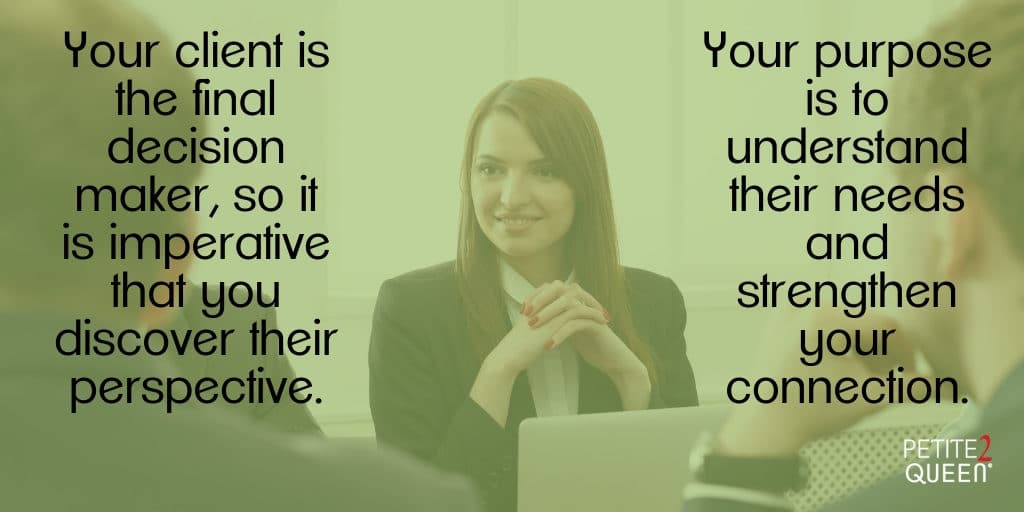I just learned I have a co-worker who is calling on one of my clients. How do I confront this situation of apparent client poaching? – Trish in Honolulu, HI
Answer:
First thing – don’t assume the worst. How did you learn about this? Was it from a trusted resource in a position to have first-hand knowledge, from an office scuttlebutt, or directly from your customer? There could be any number of things happening, and hearsay is lethal. You need to establish your frame of reference and a grounded understanding of the situation. Then you will have the vital information required to leverage as you tackle this head on.
Once you have ascertained that a co-worker is indeed calling on one of your clients, there are three obvious paths to resolution. These avenues are with the customer, your peer, or a shared manager, and each requires a different approach to achieve your objective for resolution. Whenever possible, meet in person, or utilize a video meeting. The value of visual clues are tremendous as you move through this process.

Customer First
Your client is the final decision maker, so it is imperative that you discover their perspective, any influencing factors, and the circumstances surrounding the outcome. If the information has come to you directly from your customer, it’s the perfect opportunity to ask questions and explore the reasons. Address your inquiry in a positive, curious, and open manner. Your goal is to always nurture and maintain a mutually beneficial relationship. Never put your client in a defensive or uncomfortable position, as this could lead to a bitter seed of resentment taking hold. Be mindful of your body language and tone, and choose your words carefully. Remember, there may be a valid reason your client has made this decision. Your purpose is to understand their needs and strengthen your connection.
Second Move
Once you have a clear view of the landscape, you must talk with the other sales person. The baseline is to pave a way forward for your client, for your working relationship, and for the organization’s well-being. Your conversation, once again, should be in person or via video chat. Your objective is to be transparent, professional, cordial, and friendly. Consider taking a coffee break or meal together, because getting offsite brings in a sociable atmosphere.
From what you have learned with your client, you will be poised for the discussion with your peer. In most cases there is either a valid or unintentional reason behind the impression of client poaching. Very few professional sales people will egregiously cross this line. (Client poaching is the definition of rank sales behavior.) Even when your styles or agendas are wildly divergent, there is common ground. The purpose of the conversation is to establish a mutual understanding of the circumstances and the means to mitigate the situation.
Bring a positive, fair, and reasonable approach to the table. Consider win-win options when there is overlap, such as a large client organization where it makes sense to have different sales people working with each sector. You may want to examine teaming up to handle a really large account and strategically align your efforts.

Manager Involvement
Finally, get your manager strategically involved to guide client care. Share the intel from your client and peer discussions, and if you have mapped a solution, clarify why and how it will work. If you were not satisfied after the conversation with your co-worker, ask for your manager’s insight and advice on how to quickly determine a constructive outcome.
The bottom line is to get out in front of this situation. Keep your emotions at bay, and avoid jumping the shark. There is every possibility this could turn into a splendid moment.
In my case it did. My client was a third party administering a long-term initiative for large company. The company already had a dedicated sales professional working with them on day-to-day projects. In this situation, the client initiative was billed through the third party. The other sales person and I teamed up to provide a seamless solution to both of our customers. I managed the work associated with the initiative which flowed through my client, while the other sales person reported back to his client on the progress of the initiative within our organization. We worked together to strengthen our relationships and deliver results. We accomplished this by checking our egos at the door, coming together, and evolving a win-win for everyone.
Be open to this turning into a happy ending, as my own experience did. Good luck!

Lynn Whitbeck is the co-founder and President of Petite2Queen. She is focused on identifying and evaluating opportunities for women at work, helping them define their personal roadmap. She dedicates herself to delivering tools and insights, embracing visualization of the big picture, and identifying and implementing the minutiae of detail. Lynn aims to share lessons learned along her journey and enable positive uplift for women.

